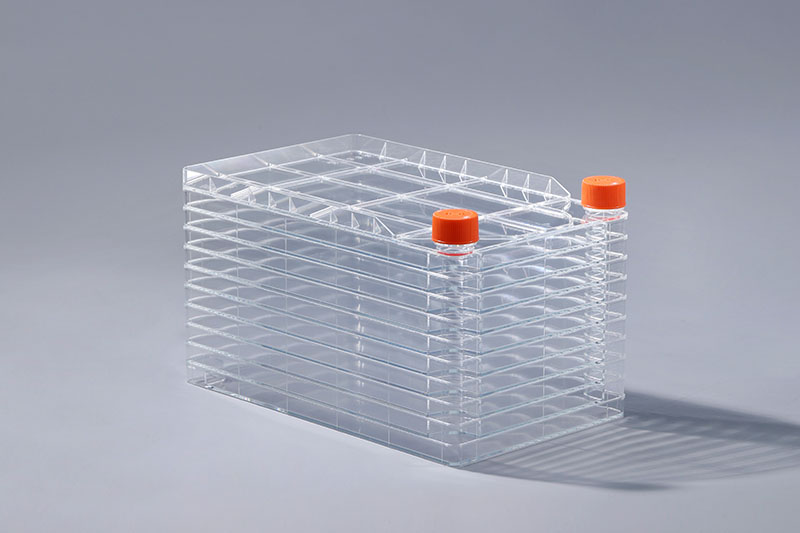Cell culture is a very delicate work. It is necessary to ensure that the environment is sterile and non-toxic, and the temperature is appropriate, as well as adequate nutrition. Cell consumables are the prerequisite for achieving these ideal conditions, and their selection and use are of vital importance. The cell factory is a common consumable for large-scale cell culture work. What are the characteristics of its production materials?
The materials of the cell factory are mostly medical-grade polystyrene (English: Polystyrene, referred to as PS), which is mainly used to manufacture medical bottles, syringe trays and packaging materials. Its copolymer with diene and acrylonitrile is commonly known as l1#iS resin. It has only excellent mechanical strength and processing performance. It can be used to prepare adsorption-type artificial kidney shells. It can be made into porous carbonized adsorption resin to remove toxic substances in the patient's blood, such as excessive drugs and some pathogenic antibodies and immune complexes.
Polystyrene material has the following characteristics:
1. The texture is rigid and the impact strength is low; the random configuration of polystyrene has good gloss, high light transmittance and good coloring.
2. The softening temperature is 80°C. Below 80°C it is a solid as hard as glass. Above 80°C it becomes a softer object. It has rubber-like properties. Avoid using it at high temperatures.
3. Good molding performance, within the use temperature range, the finished product has small shrinkage and deformation and stable dimensions; good water resistance, chemical stability decreases with the increase of temperature; for certain concentrations of inorganic acids, organic acids, salt solutions and alkalis , Alcohols, vegetable oils, etc. have good resistance, and will gradually turn yellow, devitrify and crack when placed in the sun for a long time.
4. Contact with oils and insect control agents often appear cracking, discoloration and sticky melting, and are prone to aging and yellowing under the action of light, oxygen, and heat.
5. It is easily soluble in organic solvents such as chloroform, dichloromethane, toluene, butyl acetate, etc. Avoid contact with the above solvents during storage.
The above is about the characteristics of the materials used in the cell factory. Polystyrene is a commonly used material for cell consumables. For example, cell culture plates, cell culture flasks, elisa plates or chemiluminescent plates will use this material to ensure that it meets the needs of cell growth.
The FAI climbed 5.9 percent year-on-year in the first 11 months of 2018, quickening from the 5.7-percent growth in Jan-Oct, the National Bureau of Statistics (NBS) said Friday in an online statement.
The key indicator of investment, dubbed a major growth driver, hit the bottom in August and has since started to rebound steadily.
In the face of emerging economic challenges home and abroad, China has stepped up efforts to stabilize investment, in particular rolling out measures to motivate private investors and channel funds into infrastructure.
Friday's data showed private investment, accounting for more than 60 percent of the total FAI, expanded by a brisk 8.7 percent.
NBS spokesperson Mao Shengyong said funds into weak economic links registered rapid increases as investment in environmental protection and agriculture jumped 42 percent and 12.5 percent respectively, much faster than the average.
In breakdown, investment in high-tech and equipment manufacturing remained vigorous with 16.1-percent and 11.6-percent increases respectively in the first 11 months. Infrastructure investment gained 3.7 percent, staying flat. Investment in property development rose 9.7 percent, also unchanged.
 English
English



















































